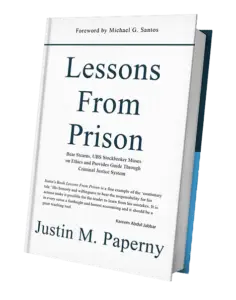Waiting Too Long Closes Doors
Last February, I spoke with a pharmacist facing serious opioid distribution charges—millions of pills allegedly moved through illegal channels. When we first spoke, his focus was on minimizing risk: “I don’t think they have enough.” His plan was to wait. Today, after learning that others in the case have already cooperated and provided evidence, his situation has changed. The Department of Justice no longer needs his cooperation. He waited too long—and now, he has no leverage.
This is not unique to healthcare fraud cases. Across tariff cases, immigration cases, and healthcare prosecutions, early decisions determine outcomes. Those who take responsibility early, document their actions, and cooperate when they can have the strongest chance to show they deserve leniency. If you wait, deny, or ignore the government’s case, you lose chances to cooperate, negotiate, or present anything that might reduce your sentence.
The BOP Memo Aligns With This Reality
The June 2025 Bureau of Prisons memo highlights the role of documented release plans in determining early placement, home confinement, and administrative referrals. It’s clear: “Documentation should support the individual’s release plan.” This is not a formality. It’s a requirement.
Those who come into custody with no plan, no documented effort, and no proof of accountability face the full length of their sentence. Those who take steps early—cooperating when appropriate, documenting introspection, building assets like educational progress, employment plans, and restitution strategies—enter the system with a record that can influence how the BOP, probation officers, and judges view them.
Michael Santos Built the Standard
Michael Santos spent 26 years in federal prison. He didn’t wait to see what others would do. He documented every course, every milestone, every effort toward preparation. That work became the Release Plan Workbook, which Santos donated to thousands of prisoners. His approach became a national model—and now aligns with BOP policy.
A release plan is not a one-time form or checklist. It’s an evolving, personal record that shows measurable growth and preparation for release. Without it, defendants—whether in healthcare, tax, or immigration cases—are just hoping for leniency without proof.
Publish Where It Counts
PrisonProfessorsTalent.com provides a public platform where defendants can publish their release plans, document progress, and show stakeholders what they’ve built. Michael Santos’s own profile is live on the site, showing how consistent, transparent documentation works. This is the standard now expected across the system.
There Are No Do-Overs
The pharmacist wanted to go back to February and start over. But there are no do-overs. What you do today matters. Waiting or hoping the government “doesn’t have enough” is not a strategy. Cooperating early—when appropriate—and keeping a detailed, written record of courses completed, work done, and progress made gives you the strongest position at sentencing and during BOP reviews.
Join our weekly webinar every Tuesday at 11 a.m. PST / 2 p.m. EST or schedule a personal call to get help building, writing and sharing a release plan that shows you’ve taken concrete steps to prepare for release and deserve early placement.
Justin Paperny



